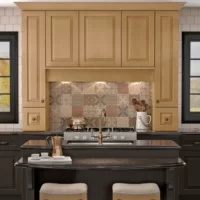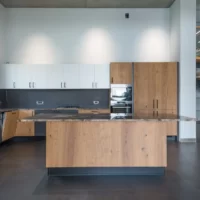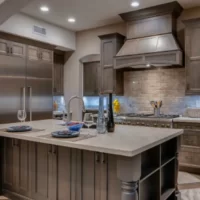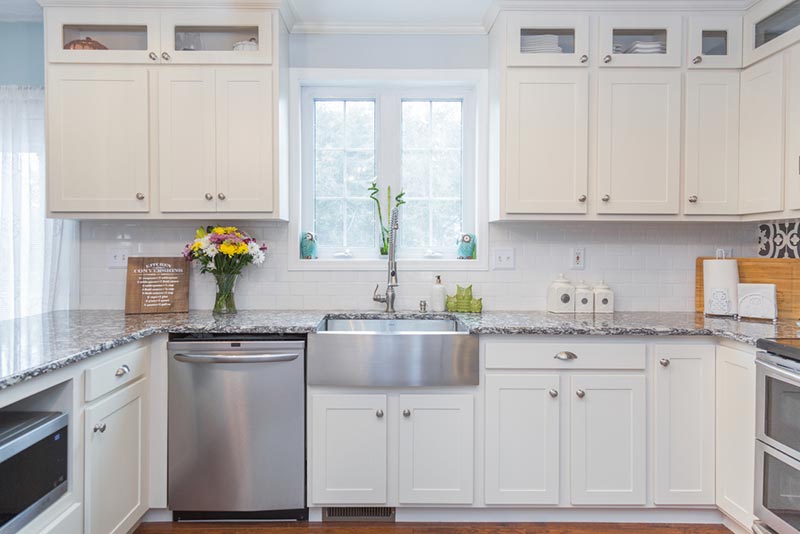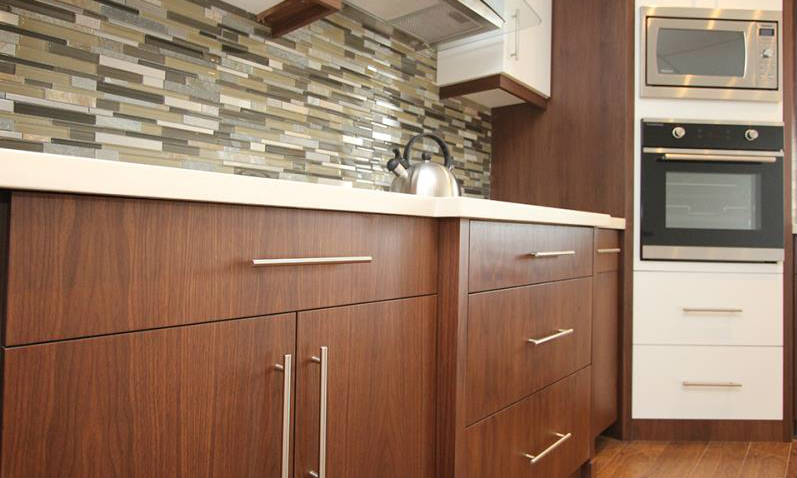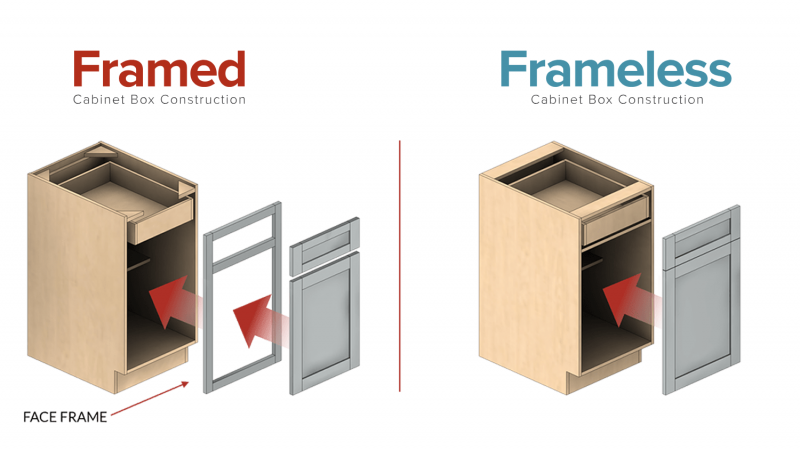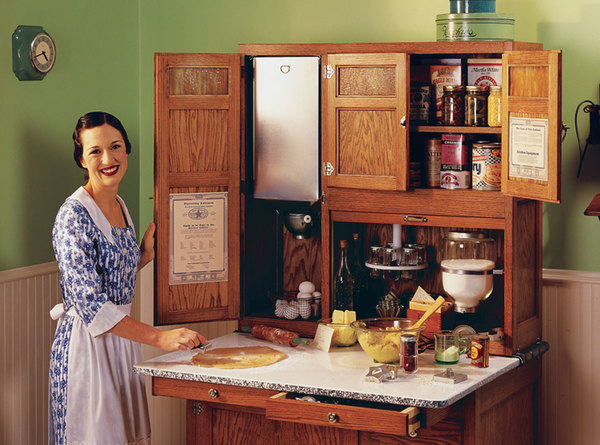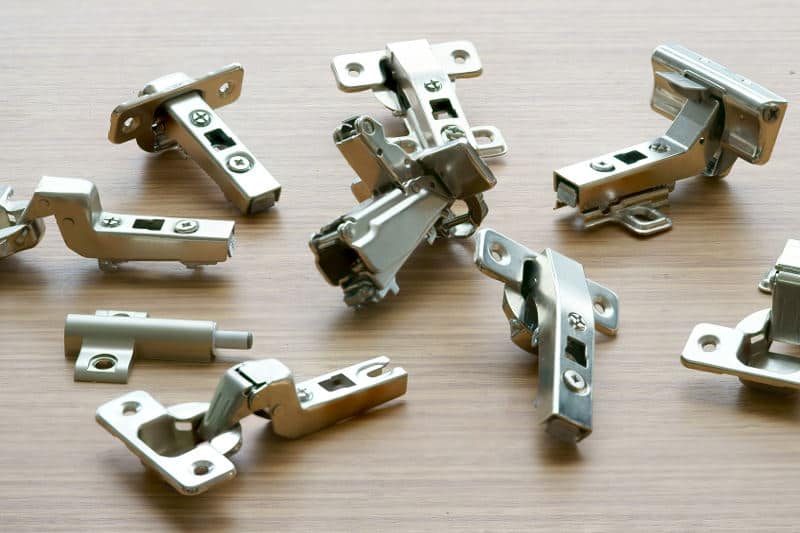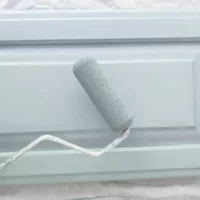A furniture manufacturing business called Sellers in Elwood, Indiana produced the first Hoosier-style cabinet in 1898. Eventually, Sellers relocated to New Castle. What is a Hoosier cabinet?
More than just a cabinet, Hoosier cabinets were a necessity in the majority of homes. In addition to holding usable utensils, the cabinets also contained kitchen essentials like sugar and flour. Most Hoosier cabinets held bread boxes, meat grinders, spice Lazy Susans, and flour sifters.
It’s unclear whether the cabinets got their name because the Hoosier Manufacturing Company produced the majority of the cabinets sold during their heyday or because the majority of businesses producing the variety of cabinets were all based in Indiana, also known as the Hoosier state.
Whatever it was, the name stuck, and the features and history of this group are distinctively American.
Table of Contents
What Does “Hoosier” Mean?
Over 150 years ago, Indiana’s name, Hoosier, was associated with the state. There are several theories about its origin, one of them involves people yelling “who’s there?” across the river and the other is of a man who lost his ear in a bar fight and someone, unfortunately, picked it up and asked, “whose ear?” Both circumstances sound similar to the term “Hoosier”.
What does the phrase mean in relation to the Hoosier cabinet, then? The majority of cabinets were produced in Indiana, hence the name of the cabinet. In 1898, a furniture company by the name of Sellers in New Castle, Indiana, produced the first Hoosier cabinets. The cabinet gained popularity up until the late 1940s when records for the cabinets started to disappear.
What Is A Hoosier Cabinet?
The Hoosier cabinet was a priceless addition to any kitchen as a tough all-in-one mobile shelving unit.
Upper and lower storage are available in a Hoosier cabinet. Early designs featured multiple top drawers for spices, a wooden work surface, and possum-belly bin drawers underneath for flour and sugar,
Other Hoosier models had worktops made of zinc or aluminum and a natural oak finish. An integrated piece of kitchen furniture is the cabinet unit. Cabinets with glass doors or blind fronts were common in older units. In order to store more flour, some models had a deep bottom.
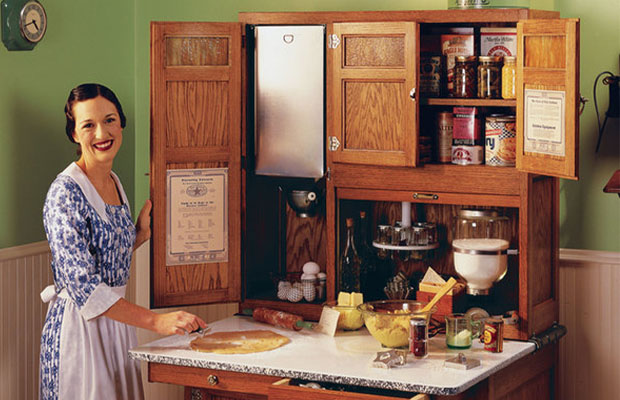
Why Hoosier Cabinets Were So Popular?
Hoosier cabinets were popular in an era before built-in cabinets and countertops took over the kitchen, so it was useful to have a dedicated space for food preparation and a built-in storage area for the most frequently used items close at hand. Typically, they had a worktop made of metal or marble and were constructed of solid wood.
Some of the innovative features of a Hoosier cabinet were built-in flour sifters and a spice rack with specially made “ant-proof” glass jars as well as around 40&of counter space, a luxury that was uncommon in 1920s kitchens. Aside from the excellent storage space for pots, pans, and plates down below, additional bins for essentials like salt and sugar were also built in.
The Hoosier cabinet was marketed to overworked housewives through extensive advertising by Hoosier Manufacturing Company. Packing this much innovation into such a small space was revolutionary for its time.
The Hoosier cabinet significantly improved the lives of the women who used it during a time before modern appliances, when almost all cooking was done from scratch. It’s estimated that at its height, Hoosier cabinets were found in the kitchens of more than 10% of American homes.
Hoosier Cabinet Fading Popularity & Rebirth
Nearly all consumer goods experienced difficulty during the Great Depression, and the Hoosier cabinet was no exception. The Hoosier cabinet started to be seen as out-of-date as newer kitchen appliances entered the market in the 1930s due to declining sales from their peak in the prosperous 1920s.
The Hoosier cabinet became obsolete and out of date as times and tastes changed by the 1940s as the modern kitchen gained popularity and featured built-in cabinets and countertops. Then, with the end of World War II and the consumer boom years, a huge number of new kitchen appliances and conveniences entered the market, driving out the major cabinet manufacturers.
Hoosier Manufacturing Corporation and G. The closure of I. Sellers and Sons in 1942 and 1950, respectively, essentially marked the end of the Hoosier cabinet’s rule.
These cabinets have recently started to be discovered by collectors, who then restore them as an exceptional example of Americana. The Hoosier cabinet serves as a link between contemporary technological kitchens and the traditional kitchens of the 18th and 19th centuries.
Different Modern Hoosier Cabinet
Although a vintage Hoosier cabinet might be of assistance to you, authentic examples are hard to find and expensive. The original Hoosier design is still used as the inspiration for cabinets today.
Amezquita Kitchen Pantry
in four different colors. You can get this model in white or one of the three wood grains available. While the white appears more contemporary, the wood grains appear more natural.
Pros
- Microwave space
- Durable
Cons
- Not easy to assemble
Greyston Kitchen Pantry
The Greyston takes its cue from the Early 1900s Hoosier cabinets. Despite being small, the structure is the same. The grain has a distressed, vintage feel that adds to the character.
The piece serves as both a console table and a foyer table.
Pros
- Versatile
- Multiple storage options
Cons
- Not easy to assemble
Rushden Bar Cabinet
Rushden Bar Cabinet is a versatile unit. Both the top and bottom cabinetry feature double doors. Access to crucial items is made quick and simple by cabinet door knobs.
The design of the pantry is improved by cabinet slat details. Four slots in the top cabinet are available for storing your expensive wine bottles.
A five-bottle wine rack is integrated into the bottom cabinet’s four storage spaces. You can show off wine glasses using the fixture below the top cabinet. Make use of the open shelf to display expensive liquor bottles or set aside space for a microwave.
Pros
- Adjustable metal legs
- Hidden storage options
Cons
- Not easy to assemble
- Too fragile
Homcom Freestanding Cabinet
An all-encompassing masterwork is the HOMCOM Freestanding Cabinet. Oak or charcoal gray colored engineered wood that is made. Microwaves and espresso machines can fit in the unit.
Five cubbies, three pull-out drawers, and two cabinets are included in the pantry. It has an anti-tilt mechanism as well, which keeps it firmly fastened to your wall.
Pros
- Anti-tilt technology
- Engineered wood
Cons
- Assembly instructions hard to understand
- Weak drawers
Blanken Kitchen Pantry
Storage space is in abundance in the Blanken kitchen pantry. This choice ought to work for you if you intend to replace some of your standard cabinets with Hoosier cabinets. It only comes in one color, but white is a universal color.
Pros
- Adjustable metal legs
- Hidden storage options
Cons
- Not easy to assemble
- Too fragile
Schuetz Kitchen Pantry
One way to include a coffee station in your house is to use the Schuetz Kitchen Pantry. A workstation can be set up on the faux marble countertop. The rustic appeal is provided by the cross beams.
Pros
- Marble countertop
- Large storage options
Cons
- Not easy to assemble
Cierrah Pantry Cabinet
The Cierrah cabinet features flat doors with a vintage flair. It is the perfect cabinet for a middle ground. Elegant cabinet doors provide a fashionable appearance. This cabinet is perfect for creating a modern feel.
Pros
- Large drawer space
- Extra storage options
Cons
- Not easy to assemble
Hoosier Cabinet Alternatives
There are substitutes that function just as well and provide the same character if a Hoosier cabinet set is not available. Since new manufacturers can’t use the term “Hoosier,” many use these words instead.
Hutch
A kitchen hutch is comparable to a Hoosier cabinet. Hutches can be used as furniture in any room and occasionally double as vanities. Hutch and Hoosier cabinets are now interchangeable.
Hutches were used prior to Hoosier cabinets. As you’re not referring to a product or a particular time period, the word is also more forgiving. It is a portable cabinet in a specific design.
China Cabinet
A china cabinet has a glass top and a solid, frequently door-covered, bottom. China and other trinkets are on display on the glass top. These cabinets are used in homes with antiques to protect valuable items.
China is not where the cabinets come from. Initially, they served as a china dish display. People wanted a special storage location where they could display their china collection because porcelain is fragile.
Pie Safe
In restaurants that display pies, pie safes are common. Large glass panels are on them, and they have a wood cabinet appearance. Traditionally, pies, meats, and other perishables were kept in pie safes. They give your kitchen a diner or bakery vibe.
Pie safes were first made by the Amish, and they have a history dating back to German immigrants to the US. The only authentic pie safes still produced in the country today are those made by the Pennsylvania Dutch community.
Welsh Dresser
With the addition of optional glass, a Welsh dresser is similar to a china cabinet. Comparable to a traditional Hoosier cabinet, but with open shelving on the top. Welsh dressers are called china hutches.
The Welsh dresser is from Wales, thus the name. Although the cabinets were well-liked across Europe, Wales is where the phrase that we still use today originated. They are kitchen cabinets, but they also function as general storage and wardrobes.
Kitchen Buffet Combo
The base of a Hoosier cabinet is known as a kitchen buffet. Just add a top cabinet to transform one into a Hoosier cabinet. Even better than purchasing a Hoosier cabinet outright, you can have one converted and customized for a much lower cost.
You can save money on materials if you hire someone to add to the buffet. You just need a way to attach the little upper cabinets to the bottom cabinets, and some small upper cabinets. Use open shelving for a less expensive version.
FAQs
How Difficult Is Hoosier Cabinet Restoration?
If you need to restore an original Hoosier cabinet, it will take time and money. Long-term, you’ll be happy you put forth the effort. Cabinets from Hoosier are vintage. The cabinets are an important part of US history and should be preserved.
Determine whether your Hoosier cabinet is worth restoring before you start. The cabinets were painted at the factory. An owner would eventually repaint their cabinets. Do not strip the paint off your Hoosier if it was painted at the factory. The cabinets were made with poor-quality wood. The wood will be harmed if the paint is stripped.
Can A Hoosier Cabinet Fit In A Tiny House?
Tiny homes can use mini-Hoosier cabinets. For your tiny house, you can have a cabinet made specifically for it. It will depend on the layout of your tiny house if you have an original cabinet. Either it will fit or it won’t.
Are Hoosier Cabinets 3D Printable?
Yes, they do, and they’re not just affordable; they’re also readily available. Making a Hoosier cabinet would be enjoyable if you’re looking for a fun DIY project.
Final Words
Hoosier cabinets were an early version of contemporary kitchen cabinets with functional work and storage areas. Preserve your original Hoosier if you have one. Among the furniture and antique collectors, an original cabinet in excellent condition is worth $2,000.
Should you be looking to purchase a new Hoosier cabinet? don’t be afraid to experiment. The cabinets are traditional, but that doesn’t mean that formal standards for appearance must be followed.
Read More:




